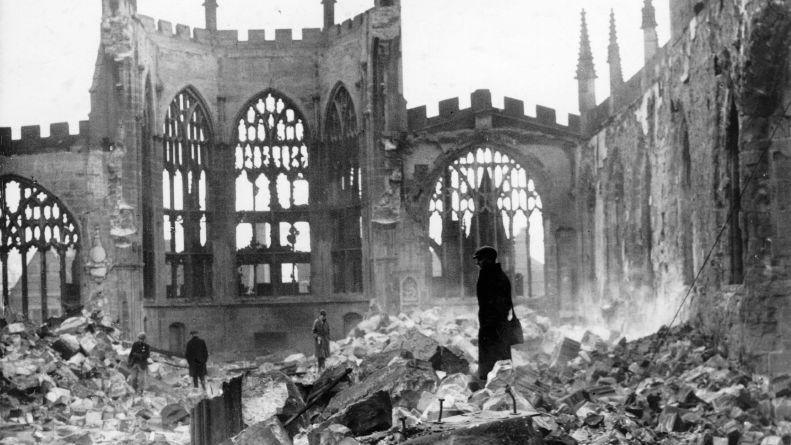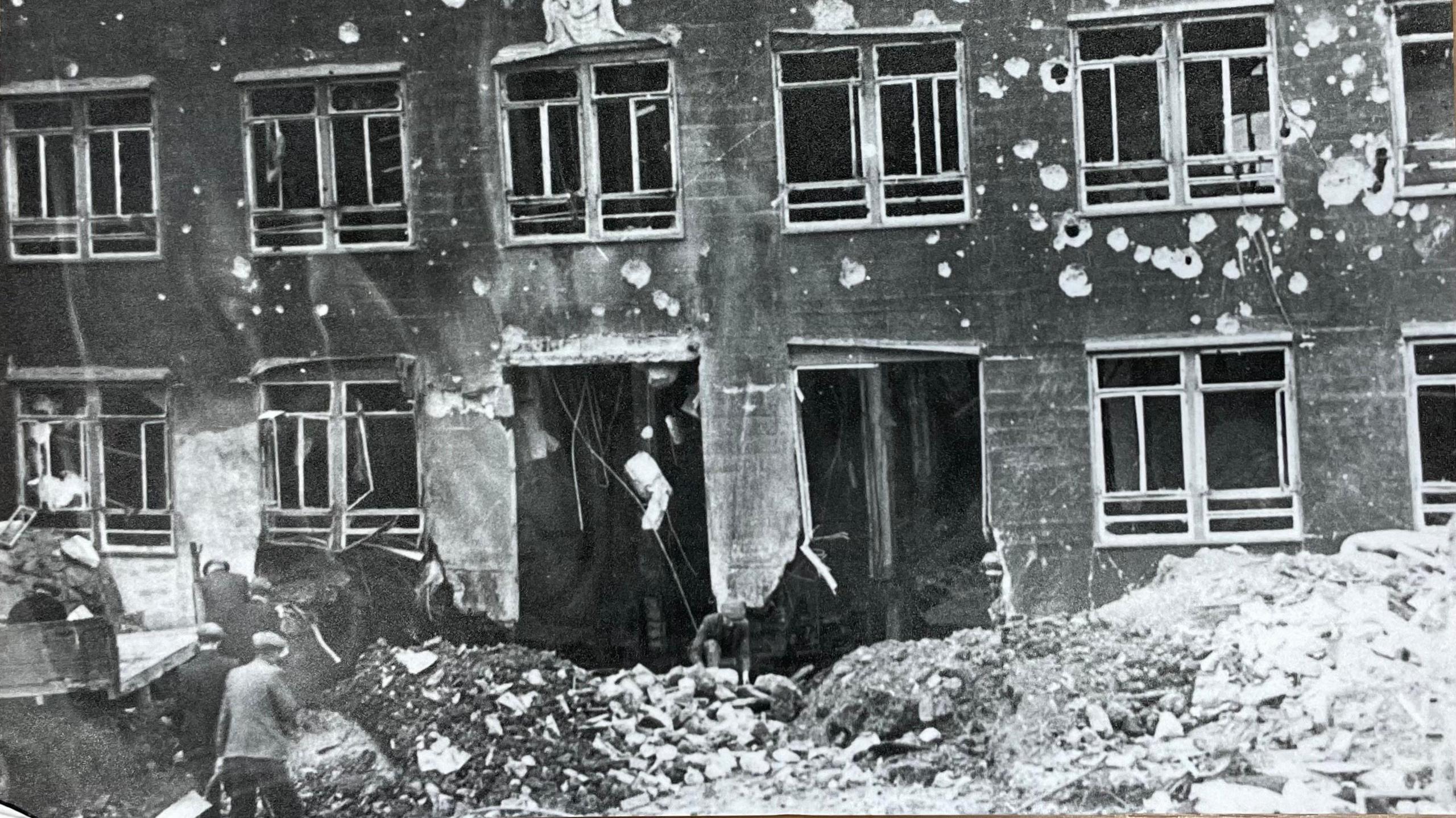Cardboard cathedral built as city remembers Blitz

Volunteers James Padvis, Debby Cuneo and Deb Peretz are helping with the build
- Published
Volunteers are commemorating the 85th anniversary of the Coventry Blitz by rebuilding its cathedral out of cardboard.
Over 11 hours overnight on 14 November, 1940, German bombs fell relentlessly on the city, killing hundreds, razing its medieval centre, and destroying the cathedral.
Artist Olivier Grossetête said 25km (15.5 miles) of tape would be used for the 15m-tall (49.2ft) cardboard structure, and he hoped rainy weather would not deter volunteers from coming to help.
The creation will be then be lit up overnight and destroyed on Sunday after 15:00 GMT to represent the sudden loss of the cathedral during the raid.
Volunteers from across the world have been putting together the parts of the installation, which will be built from the ground up in Broadgate on Saturday.
Mr Grossetête said bringing the community together in workshops had been an important part of the process.
"All of the project is important, not just the result," he said.

Hundreds of people have helped to create parts of the cardboard installation in advance
Malkit Bhambra, from Coventry, said she had been helping with the pre-build at Drapers Hall since Monday.
"Having seen the ruins in the cathedral, it's amazing to see that we can build it up again and replicate what happened and also to remember all the people who lost their lives during the war," she said.

Malkit Bhambra has been helping to build the installation since Monday
Historian Ben Mayne, who grew up in Nuneaton, is offering walking tours on Saturday that highlight stories of bravery during the Blitz, including from local nurses and young volunteers.
"What stands out for me is acts of heroism throughout," he said.

Coventry's cathedral ruins were lit up during a memorial service on Friday
Meanwhile, a candle-lit service at the cathedral on Friday was attended by more than 1,000 people, including World War Two survivors.
Sirens sounded in the cathedral's ruins at 18:55 to mark the start of the air raid, followed by a two-minute silence.
Cathedral's dean the Very Reverend John Witcombe told the congregation: "Some suggest we should move on and forget the events that this night commemorates.
"Instead we choose to use the events of the 14th and perhaps more importantly the 15th of November as a springboard for the future."

Coventry Cathedral was reduced to ruins and rubble following the German air strike on 14 November 1940
Ken Barber, who was five at the time of the Blitz, said he vividly remembered seeing city-centre buildings burning.
"The army was trying their best with the auxiliary fire service to try and put the flames out with no water," he said.
Get in touch
Tell us which stories we should cover in Warwickshire
Follow BBC Coventry & Warwickshire on BBC Sounds, Facebook, external, X, external and Instagram, external.
- Published2 days ago

- Published1 day ago

- Published2 days ago

- Published5 days ago
